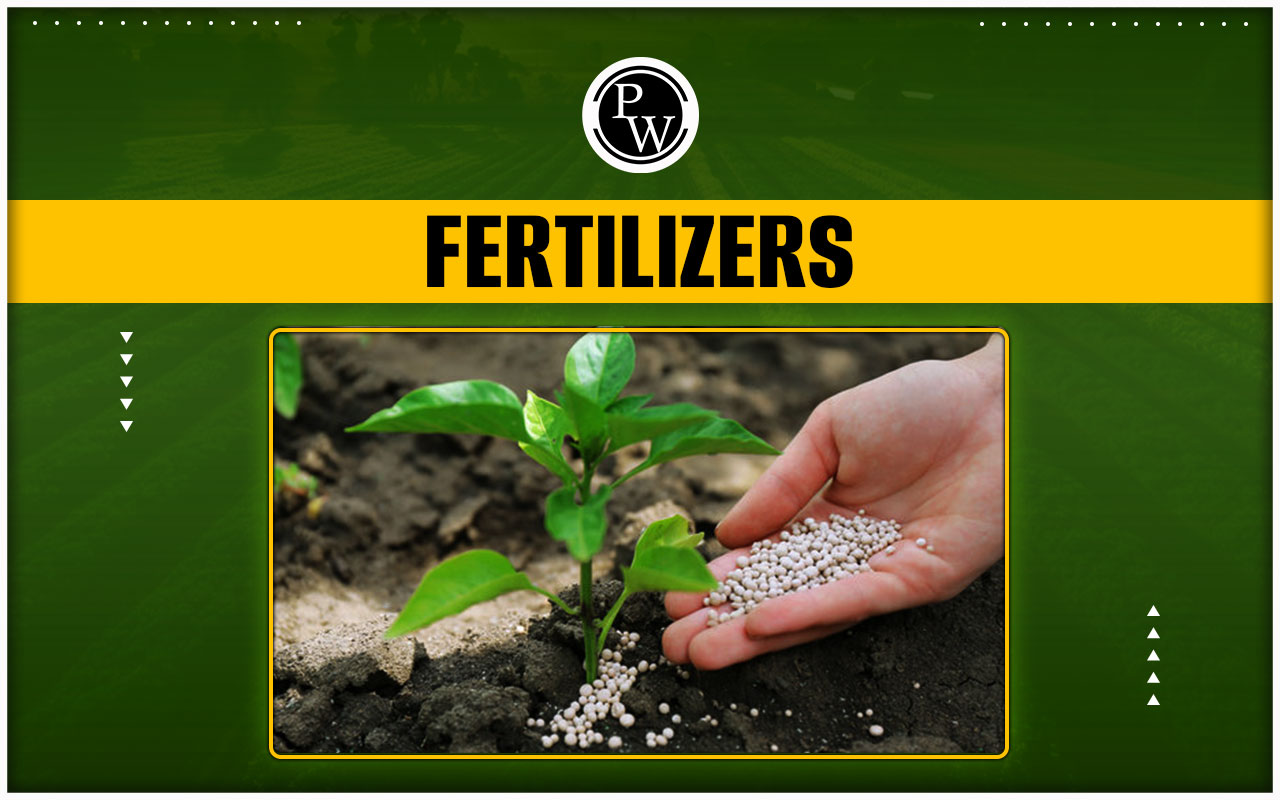

Fertilizers are substances added to soil to enhance its ability to support plant growth. They contain essential nutrients, such as nitrogen, phosphorus, and potassium, vital for plant growth and development. Fertilisers are an essential tool in modern agriculture, helping to increase crop yields, improve soil fertility, and ensure food security for the growing population.
Importance of Fertilizers in Agriculture
Fertilizers are essential for agriculture as they provide the necessary nutrients for plants to grow and produce high-quality crops. In many parts of the world, the natural soil is deficient in some essential nutrients, making it difficult for plants to grow and produce high yields. These deficits can be remedied with fertilisers, which give plants the vital nutrients they need to develop and produce high-quality crops. Moreover, fertilisers can help improve soil's physical and chemical properties, making it easier for roots to penetrate and absorb water and nutrients. This leads to more robust, healthier plants that are less susceptible to disease and pests.Types of Fertilizers :
- Chemical fertilisers are made from synthetic substances and typically contain high levels of nitrogen, phosphorus, and potassium, the three essential nutrients plants require.
- On the other hand, organic fertilisers are made from natural materials such as compost, animal waste, and plant matter and provide a slow and steady supply of nutrients to plants over time.
Chemical Fertilizers
Chemical fertilisers are made from synthetic substances and typically contain high nitrogen, phosphorus, and potassium levels, the three essential nutrients plants require. They are designed to give plants a quick and concentrated dose of these essential nutrients. Chemical fertilisers can be purchased in various forms, including granules, liquids, and powders, and are widely used in modern agriculture due to their convenience and effectiveness.Advantages
Chemical fertilisers have several advantages, including the following:- Quick results: Chemical fertilisers provide a quick and concentrated source of essential nutrients, which can help farmers achieve high crop yields quickly.
- Convenience: Chemical fertilisers are widely available and can be easily applied to crops using various methods, making them a convenient option for farmers.
- Cost-effective: Chemical fertilisers are often less expensive than organic fertilisers, making them an affordable option for farmers with limited budgets.
Disadvantages
However, there are also several disadvantages to using chemical fertilisers, including- Environmental impact: Chemical fertilisers have the potential to affect the environment, notably through degrading soil, polluting water, and releasing dangerous chemicals into the atmosphere.
- Soil depletion: Chemical fertilisers can contribute to soil depletion over time, reducing its ability to support plant growth and leading to soil degradation.
- Human health risks: Some chemical fertilisers can harm human health if not used properly and pose a risk to farmers and farm workers who come into contact with them.
Organic Fertilizers
Organic fertilisers are natural substances made from plants, animals, or minerals that improve soil fertility and provide essential nutrients to plants. They are derived from natural sources, such as compost, manure, bone meal, and rock minerals, and are designed to provide a slow, steady supply of essential nutrients to plants over time. Unlike chemical fertilisers, organic fertilisers are not synthetic and are considered a more sustainable and environmentally friendly option for farmers.Types of Organic Fertilizers
There are several organic fertilisers, including the following:- Compost: Organic material that has decomposed, such as leaves, grass clippings, and food scraps, is what compost is made of. It enhances soil fertility and structure since it is a rich source of essential nutrients like nitrogen, phosphorus, and potassium.
- Manure: Manure is produced by farm animals, such as cows, horses, and chickens, and is a rich source of organic matter and essential nutrients. It is typically aged and composted before use to minimise the risk of spreading harmful bacteria and pathogens.
- Bone meal: Animal bones are crushed to make a bone meal, a high phosphorus supply, a nutrient required for plant growth.
- Rock minerals: Rock minerals were naturally occurring minerals ground into a fine powder and utilised as a source of vital plant nutrients. Examples include rock phosphate and granite meal.
Advantages
Organic fertilisers have several advantages, including the following:- Sustainability: Organic fertilisers are derived from natural sources, making them a more sustainable option for farmers.
- Soil improvement: Organic fertilisers improve soil structure and fertility, helping to create healthy soil that can support plant growth over the long term.
- Environmental benefits: Organic fertilisers are generally considered less hazardous to the environment than chemical fertilisers because they don't discharge dangerous chemicals into the air or water.
Disadvantages
However, there are also several disadvantages to using organic fertilisers, including- Slow results: Organic fertilisers provide a slow and steady supply of essential nutrients, which may need to be more for farmers looking for quick results.
- Cost: Organic fertilisers are often more expensive than chemical fertilisers, making them a more costly option for farmers.
- Availability: Organic fertilisers may only be widely available in some regions, and farmers may need to purchase them from speciality suppliers or produce them themselves.
Factors Affecting Fertilizer Application
The success of fertiliser application depends on several factors, including soil type, climate, and crop type. Factors that affect fertiliser application include- Soil type: Different soil types have different nutrient needs and may require different types and amounts of fertiliser. For example, sandy soils may require more frequent fertiliser applications, while clay soils may require less frequent applications but more fertiliser per application.
- Climate: Climate can have a significant impact on fertiliser application. For example, hot and dry climates can cause the fertiliser to evaporate or leach away. In contrast, cool and wet climates can reduce fertiliser effectiveness due to slow plant growth and reduced nutrient uptake.
- Crop type: Different crops have different nutrient needs and may require different types and amounts of fertiliser. For example, high-yielding crops like corn and soybeans may require more fertiliser than low-yielding crops like wheat and oats.
Methods of Application
There are several methods of fertiliser application, including the following:- Broadcasting: Broadcasting is spreading fertiliser evenly over the soil surface. This method is best for small areas and is typically used for garden and landscaping applications.
- Banding: Banding involves applying fertiliser in narrow bands close to the seed row. This method is more efficient than broadcasting, as the fertiliser is placed directly where the plant roots grow.
- Foliar feeding: Foliar feeding involves spraying fertiliser directly on the leaves of plants. This method is best for crops lacking essential nutrients, as the plant can absorb the fertiliser directly.
- Drip irrigation involves applying fertiliser through a drip irrigation system. This method is best for large-scale operations and allows farmers to apply fertiliser directly to the roots of plants, where it is most needed.
Importance of Proper Fertilizer Application
Proper fertiliser application ensures optimal plant growth and yield. Factors that can impact the success of fertiliser application include- Timing: Fertilizer should be applied at the right time, based on the needs of the crops grown and the growing conditions. For example, fertiliser should not be applied in hot and dry conditions, as it may evaporate or leach away.
- Rate: The fertiliser application rate should be based on the nutrient needs of the crops grown, the soil type and the growing conditions. Over-applying fertiliser can lead to excess nutrient runoff, harming the environment and nearby water sources.
- Placement: Fertilizer should be placed in the right location, close to the roots of plants where it is most needed. Placing fertiliser too far from the roots can reduce its effectiveness, as the plant roots may need help to reach it.
Measures to Minimize Negative Impacts
There are several measures that farmers can take to minimise the negative impacts of fertilisers, including- Using best management practices: Farmers can use best management practices, such as applying fertiliser at the right time, rate, and location to minimise fertiliser runoff and reduce the risk of water and soil pollution.
- Choosing organic fertilisers: Farmers can choose organic fertilisers made from natural materials less likely to harm the environment than chemical fertilisers.
- Implementing conservation practices: Farmers can implement conservation practices, such as planting cover crops and using no-till methods, to reduce fertiliser runoff and protect soil health.
- Using precision agriculture: Farmers can use precision agriculture, which involves using technology to optimise fertiliser application and reduce waste, to minimise the negative impacts of fertilisers on the environment.
Related Links
Fertilizers <span style=
Q1. What are fertilisers?
Fertilisers are substances that are added to soil to increase its fertility and promote the growth of crops. They provide essential nutrients such as nitrogen, phosphorus, and potassium to the soil, which are essential for plant growth.
Q2. What are the main types of fertilisers?
Fertilisers can be divided into two main categories: chemical and organic. Chemical fertilisers are synthesised in a laboratory and typically contain a combination of nitrogen, phosphorus, and potassium. Organic fertilisers come from organic materials like green manure, compost, and animal dung.
Q3. What are the advantages of using chemical fertilisers?
The main advantage of using chemical fertilisers is their ability to quickly provide essential nutrients to the soil. This helps to increase crop yields and ensures that plants get the nutrients they need to grow and thrive.
Q4. What are the advantages of using organic fertilisers?
The main advantage of organic fertilisers is that they are derived from natural sources and are less likely to cause environmental pollution. They also release nutrients slowly, which helps to prevent nutrient leaching and runoff.
Q5. What are the methods of fertiliser application?
Fertilisers can be applied in several ways, including broadcast spreading, banding, and topdressing. Broadcast spreading is the most common method and involves applying fertiliser evenly across the entire field. Banding involves applying the fertiliser in a band or strip across the field, while topdressing involves applying the fertiliser to the top of the soil.
🔥 Trending Blogs
Talk to a counsellorHave doubts? Our support team will be happy to assist you!

Check out these Related Articles
Free Learning Resources
PW Books
Notes (Class 10-12)
PW Study Materials
Notes (Class 6-9)
Ncert Solutions
Govt Exams
Class 6th to 12th Online Courses
Govt Job Exams Courses
UPSC Coaching
Defence Exam Coaching
Gate Exam Coaching
Other Exams
Know about Physics Wallah
Physics Wallah is an Indian edtech platform that provides accessible & comprehensive learning experiences to students from Class 6th to postgraduate level. We also provide extensive NCERT solutions, sample paper, NEET, JEE Mains, BITSAT previous year papers & more such resources to students. Physics Wallah also caters to over 3.5 million registered students and over 78 lakh+ Youtube subscribers with 4.8 rating on its app.
We Stand Out because
We provide students with intensive courses with India’s qualified & experienced faculties & mentors. PW strives to make the learning experience comprehensive and accessible for students of all sections of society. We believe in empowering every single student who couldn't dream of a good career in engineering and medical field earlier.
Our Key Focus Areas
Physics Wallah's main focus is to make the learning experience as economical as possible for all students. With our affordable courses like Lakshya, Udaan and Arjuna and many others, we have been able to provide a platform for lakhs of aspirants. From providing Chemistry, Maths, Physics formula to giving e-books of eminent authors like RD Sharma, RS Aggarwal and Lakhmir Singh, PW focuses on every single student's need for preparation.
What Makes Us Different
Physics Wallah strives to develop a comprehensive pedagogical structure for students, where they get a state-of-the-art learning experience with study material and resources. Apart from catering students preparing for JEE Mains and NEET, PW also provides study material for each state board like Uttar Pradesh, Bihar, and others
Copyright © 2025 Physicswallah Limited All rights reserved.
Get App











